Product Description
Emerging and experienced health services managers can hone their skills with these challenging and in-depth case studies. With more than 50% new content in this sixth edition, Cases in Health Services Management includes 28 cases and 12 ethics incidents that address contemporary issues encountered by administrators and managers, such as organizational change, ethical dilemmas, conflicts of interest, regional competition, staff misconduct, and patient safety. Complex, real-life management scenarios are presented for analysis, evaluation, and resolution by using a problem-solving methodology and applying knowledge, skills, and expertise from all areas of healthcare administration.
The cases are wide ranging and cover varied healthcare settings, including:
- Hospitals (large/small, urban/rural, academic)
- Long-term care facilities
- Pharmaceutical services
- Specialty and outpatient centers
- and other service delivery settings
Providing an exceptional framework for decision making and debate, this casebook is an outstanding text for capstone and issues courses as well as a valuable resource for professional development seminars for practicing administrators and risk managers in health services settings.
INSTRUCTOR MATERIALS FOR FACULTY
- Case summaries
- Exercises and role-plays
- Discussion and debate questions
- Timelines
- Decision trees
- Analyses of key issues, root causes, options, feasibility, cost-benefit, stakeholder interests
- Supplemental documents
Format: E-book
e-ISBN 978-1-938870-73-6
E-book available through:
Also available through: Baker and Taylor, Bowker, Chegg, Gardners, and Follett
About the Editors
Contributors
Preface
Acknowledgments
Introduction
PART I
POLICY ENVIRONMENT OF HEALTH SERVICES DELIVERY
- Carilion Clinic
Alexandra Piriz Mookerjee and Kurt Darr
Led by a new CEO, the efforts of a mid-Atlantic acute care hospital to develop a vertically integrated, clinic-driven health services system result in allegations of antitrust, excessive healthcare costs, disruption of physician referral patterns, and use of harsh collection practices, all of which cause a negative reaction in its service area.
- Flu Vaccine
Mary K. Feeney and Abigail Peterman
Flu vaccine shortages in 2004-2005 caused by a major manufacturer’s problems with quality control result in federal and state efforts to secure supplies of the vaccine to raise public policy and resource-allocation issues that users can role-play in three scenarios.
- Merck’s Crixivan
Kimberly A. Rucker, Nora G. Albert, and Kurt Darr
A pharmaceutical manufacturer encounters significant negative stakeholder reaction to its introduction of a new medication for the human immunodeficiency virus despite having met expectations for clinical rigor and carefully assessing stakeholders and the external environment.
- Pineridge Quality Alliance: A Case Study in Clinical Integration and Population Health NEW!
Tracy J. Farnsworth
The history, challenges, and opportunities related to development of a clinically integrated network and sponsoring organization’s quest to become an accountable care organization and engage in population health.
- Hawaii Health Systems Corporation: The Politics of Public Health Systems Governance NEW!
Earl G. Greenia
A healthcare executive facing continual public policy restructuring of Hawaii’s Health Systems Corporation must develop strategic options for his board to consider in response to this environmental uncertainty.
PART II
STRATEGIC MANAGEMENT
- Riviera Medical Center
Michael J. King and Robert C. Myrtle
The CEO of a 350-bed hospital explores alternatives to enhance its financial situation and reputation by asking the hospital board to approve a worksite wellness program to be marketed to area companies to improve workers’ health and decrease employers’ healthcare costs.
- Edgewood Lake Hospital: Leadership in a Rural Healthcare Facility During Challenging Economic Times
Brent C. Pottenger, Douglas Archer, Stephen Cheung, and Robert C. Myrtle
The new CEO of a 30-bed, not-for-profit rural hospital faces a turnaround situation to make the hospital profitable after 3 years of losses. Problems include challenging payer mix, employee overstaffing, and difficulty recruiting physicians.
- Klamath Care: Targeting and Managing Growth and Company-Wide Development NEW!
Tracy J. Farnsworth, Leigh W. Cellucci, and Carla Wiggins
The CEO of a growing system of urgent care centers recounts the organization’s development over a decade while considering strategies and options for future growth in an increasingly crowded marketplace with an analysis that uses financial, market share, and demographic data.
- Hospital Consolidation NEW!
Tracy J. Farnsworth
This case focuses on the relationship healthcare providers have with their local and regional markets and the need to balance organization and community interests when making decisions that affect the healthcare marketplace.
- Service Area Management NEW!
Tracy J. Farnsworth
Users are challenged to analyze, prioritize, and use disparate information common to a dynamic and competitive healthcare marketplace as part of an organization’s strategic planning and marketing processes.
- Western Healthcare Systems: A Healthcare Delivery Continuum NEW!
Robert C. Myrtle
Western Healthcare Systems was creating an integrated delivery system when an opportunity to acquire a large multispecialty group arose, but it may be imprudent to proceed because of hospital and multispecialty group physician resistance.
PART III
ORGANIZATIONAL MANAGEMENT
- Hartland Memorial Hospital: Part 1, In-Box and Prioritization Exercise
Kent V. Rondeau, John E. Paul, and Jonathon S. Rakich
The VP for nursing services of a 285-bed for-profit hospital must decide what actions to take regarding her in-box, which includes e-mail, correspondence, and phone messages that communicate various challenges, such as two angry nurses, a wandering patient, staff shortages, and increasing numbers of OR infections. Emphasizes priority setting, decision making, and delegation.
- Part 2 (included with instructor materials) NEW!
- Bad Image Radiology Department
Kurt Darr
Management of a community hospital is unwilling to recognize and address major problems in its radiology department, which is directed by a radiologist whose disruptive behavior and preoccupation with income and stock market speculation have diminished the quality of radiograph readings with tragic results.
- Westmount Nursing Homes: Implementing a Continuous Quality Improvement Initiative
Kent V. Rondeau
The difficulty a CEO has to overcome barriers and pitfalls in implementing total quality management in a chain of seven nursing homes is heightened as the TQM initiative becomes an issue in negotiations with the union representing nurses, which, in turn, threatens the initiative’s future.
- District Hospital: A Lesson in Governance
Cynthia Mahood Levin and Kurt Darr
A tax district community hospital has major problems with its governance structure because of historical animosities among internal stakeholders, medical staff politics, weak and ambivalent senior management, and a disruptive member of the medical staff who has ambitions to attain major power in the hospital.
- Restructuring Decision Making at Holy Family Hospital: Overcoming Resistance to a Shared Governance Program NEW!
Kent V. Rondeau
A change initiative introduced to democratize decision making and improve clinical care in a healthcare organization is met with staff suspicion, derision, and resistance.
PART IV
ORGANIZATIONAL EFFECTIVENESS
- Attica Memorial Hospital: The Ingelson Burn Center
Bonnie Eng-Suess and Robert C. Myrtle
After the merger of two hospitals, planning must include how to consolidate duplicate services and realign units, including a burn center, while considering the center’s financing and community and organizational impact.
- Pediatric Dental Care Center NEW!
Eleanor Lin
A not-for-profit pediatric dental care center that has struggled financially for years as it serves a Medicaid population is offered the opportunity to become part of a federally qualified health center, but to do so requires expanding services and significantly changing its governance structure.
- Radical Innovation on the Idaho Frontier: Bengal Telepharmacy NEW!
Julie Frischmann, Neil Tocher, and Alexander R. Bolinger
Efforts to provide pharmacy services in a rural community are successful because of creative thinking, perseverance, political deal making, and using telepharmacy in a unique and effective way.
- Structure and Funding of Hospitalist Programs NEW!
John E. Paul and Gillian Gilson Watson
An academic medical center must decide how to structure and fund hospitalist services in the context of its relationship with an affiliated school of medicine; the history and content of hospitalist functions; and other revenue that might be derived from hospitalist services, even while considering several alternate strategies.
- Appian Health Systems NEW!
Robert C. Myrtle
A negotiation simulation allows participants to assume union and hospital roles to work toward an acceptable collective bargaining agreement.
- Evolution of the Healthy Communities Initiatives NEW!
Barry Ross
Several years after initiating healthcare services for diverse, underserved communities, hospital leadership is planning how to take its activities to a level with greater impact and sustainability.
PART V
LEADERSHIP CHALLENGES
- Hospital Software Solutions (A)
Elizabeth M. A. Grasby and Jason Stornelli
A software company supplying information technology services to Ontario (CN) hospitals has an ill-defined structure and controls that frustrate a new employee with conflicting demands from the firm’s managers, including expectations inconsistent with her job description.
- The Case of Tim’s Last Years NEW!
Kurt Darr and Carla Jackie Sampson
Declining physical health forces an accomplished retired professor to enter a life care community in which his diminished independence leads to conflicts with management and staff even as further health problems result in an apparently willed death.
- Autumn Park
Cara Thomason Embry and Robert C. Myrtle
The executive director and the director of assisted living in a community for independent and assisted living must resolve a disagreement as to the appropriate level of care for a difficult resident.
- Appalachian Home Health Services
Kathryn H. Dansky
A not-for-profit home health agency faces a controversial choice after learning its best applicant for a nursing position is a convicted felon, and a review by management shows more widespread problems with recruitment and staffing.
- Suburban Health Center
Bruce D. Evans and George S. Cooley
The supervisor of the suburban branch of a city health department faces problems with an insubordinate and possibly incompetent nurse, even as the lack of authority and inadequate support from superiors are complicated by the absence of employee performance evaluations.
- Team Building: From Success to Failure in 24 Hours NEW!
Cherie A. Hudson Whittlesey
What starts as a highly successful team-building exercise becomes problematic when one physician torpedoes the process and forces the facilitator to consider underlying issues and appropriate responses that will preserve team cooperation.
PART VI
ETHICS INCIDENTS
- Ethics Incidents
Kurt Darr
Twelve mini-case studies cover the spectrum of administrative and clinical ethical issues, from conflicts of interest to dishonest contractors and from infection control to advance medical directives.
Administrative Ethics
Incident 1: Borrowed Time
Incident 2: ED Repeat Admissions: A Question of Resource Use
Incident 3: The Administrative Institutional Ethics Committee
Incident 4: Bits and Pieces
Incident 5: A Potentially Shocking Revelation
Incident 6: Intensive Care Unit Dysfunction NEW!
Clinical Ethics
Incident 7: Protecting the Community
Incident 8: Decisions
Incident 9: The Missing Needle Protector
Incident 10: To Vaccinate, or Not NEW!
Incident 11: Demarketing to Avoid Bankruptcy
Incident 12: Something Must Be Done, But What?
 Kurt Darr, JD, ScD, LFACHE, is Professor Emeritus of Hospital Administration, and of Health Services Management and Leadership, Department of Health Services Policy and Management, School of Public Health, The George Washington University.
Kurt Darr, JD, ScD, LFACHE, is Professor Emeritus of Hospital Administration, and of Health Services Management and Leadership, Department of Health Services Policy and Management, School of Public Health, The George Washington University.
Dr. Darr holds the Doctor of Science from The Johns Hopkins University and the Master of Hospital Administration and Juris Doctor from the University of Minnesota. His baccalaureate degree was awarded by Concordia College, Moorhead, MN.
Dr. Darr completed an administrative residency at the Rochester (MN) Methodist Hospital and subsequently worked as an administrative associate at the Mayo Clinic. After being commissioned in the U.S. Navy during the Vietnam War, he served in administrative and educational assignments at St. Albans Naval Hospital (NY) and Bethesda Naval Hospital (MD). He completed postdoctoral fellowships with the U.S. Department of Health and Human Services, the World Health Organization, and the Accrediting Commission on Education for Health Services Administration.
Dr. Darr is admitted to practice before the Supreme Court of the state of Minnesota and the Court of Appeals of the District of Columbia. He was a mediator for the Civil Division of the Superior Court of the District of Columbia and has served as a hearing officer for the American Arbitration Association. Dr. Darr is a member of hospital committees on quality improvement and on ethics in the District of Columbia metropolitan area. He is a Life Fellow of the American College of Healthcare Executives.
Dr. Darr’s teaching and research interests include health services management, administrative and clinical ethics, hospital organization and management, quality improvement, and applying the Deming method in health services. Dr. Darr is the editor and author of numerous books, articles, and cases used for graduate education and professional development in health services.
 Tracy J. Farnsworth, EdD, MHSA, MBA, FACHE, is President and Chief Executive Officer of the Proposed Idaho College of Osteopathic Medicine.
Tracy J. Farnsworth, EdD, MHSA, MBA, FACHE, is President and Chief Executive Officer of the Proposed Idaho College of Osteopathic Medicine.
Dr. Farnsworth has served as Director and Associate Dean of the School of Health Professions, Division of Health Sciences, Idaho State University (ISU [Pocatello]) since 2010. He is Associate Professor in the Health Care Administration Program at ISU and has served as Program Director.
Dr. Farnsworth is a graduate of Brigham Young University. He received master’s degrees in Business and Health Services Administration from Arizona State University and the Doctor of Education in Educational Leadership from ISU. In 2014, Dr. Farnsworth was awarded the Kole-McGuffey Prize for excellence in education research, and in 2016 he received the J. Warren Perry Distinguished Author Award from the Association of Schools of Allied Health Professions.
Prior to becoming an educator, Dr. Farnsworth had executive-level appointments with Intermountain Healthcare, Catholic Healthcare West, the City of Hope National Medical Center, and other public and private healthcare systems.
A Fellow of the American College of Healthcare Executives, Dr. Farnsworth has written and spoken widely on subjects related to hospital and health systems performance improvement, healthcare reform, medical education, healthcare leadership and governance, and interprofessional education/collaboration.
 Robert C. Myrtle, DPA, is Professor Emeritus of Health Services Administration, Sol Price School of Public Policy, University of Southern California.
Robert C. Myrtle, DPA, is Professor Emeritus of Health Services Administration, Sol Price School of Public Policy, University of Southern California.
Dr. Myrtle received a bachelor’s degree in business administration from the California State University, Long Beach, and a master’s and doctoral degree in public administration from the University of Southern California. During 41 years at the University of Southern California (USC), Dr. Myrtle co-authored two books on management; 18 book chapters; 51 articles in journals, including Health Care Management Review, Health Policy and Planning, Public Administration Review, Social Science and Medicine, and The Gerontologist; and 70 conference papers and professional reports. He has academic appointments in the Leonard Davis School of Gerontology and the Marshall School of Business and is a Visiting Professor in the Institute of Health Policy and Management at the National Taiwan University.
Dr. Myrtle’s key research interests are leadership, executive development, and organizational and management effectiveness. Current research includes the influence of managers’ behavior on perceptions of overall leadership effectiveness; examining factors influencing the performance of surgical teams; and assessing factors influencing organizational legitimacy during and following major natural disasters.
Dr. Myrtle is the recipient of the Academy of Management’s Health Care Division’s Teaching Excellence Award and the American Society for Public Administration’s Los Angeles Chapter Harry Scoville Award for Academic Excellence. He was named Professor of the Year at USC and has three times been named Most Inspirational Business Professor. He is the recipient of the American College of Healthcare Executives Regents Award, and the Hubert H. Humphrey Award for best article of the year appearing in the Journal of Health and Human Services Administration.
Dr. Myrtle was chair of the Los Angeles County Hospitals and Health Services Commission. He was board chair for SCAN Health Plan and was a member of the board of directors for the Huntington Medical Foundation. He has served as board chair of Health and Human Services for the City of Long Beach (CA).
Request an exam copy!
Cases in Health Services Management, Sixth Edition
Instructor’s Materials
Downloadable instructor materials are available with adoption of this text. These materials include case summaries, exercise and role plays, discussion and debate questions, timelines, decision trees, and supplemental documents. These additional materials will add to the comprehensive curriculum for the course.
Request instructor materials
NEW to Cases in Health Services Management
- Pineridge Quality Alliance: A Case Study in Clinical Integration and Population Health
Tracy J. Farnsworth
The history, challenges, and opportunities related to development of a clinically integrated network and sponsoring organization’s quest to become an accountable care organization and engage in population health.
- Hawaii Health Systems Corporation: The Politics of Public Health Systems Governance
Earl G. Greenia
A healthcare executive facing continual public policy restructuring of Hawaii’s Health Systems Corporation must develop strategic options for his board to consider in response to this environmental uncertainty.
- Klamath Care: Targeting and Managing Growth and Company-Wide Development
Tracy J. Farnsworth, Leigh W. Cellucci, and Carla Wiggins
The CEO of a growing system of urgent care centers recounts the organization’s development over a decade while considering strategies and options for future growth in an increasingly crowded marketplace with an analysis that uses financial, market share, and demographic data.
- Hospital Consolidation
Tracy J. Farnsworth
This case focuses on the relationship healthcare providers have with their local and regional markets and the need to balance organization and community interests when making decisions that affect the healthcare marketplace.
- Service Area Management
Tracy J. Farnsworth
Users are challenged to analyze, prioritize, and use disparate information common to a dynamic and competitive healthcare marketplace as part of an organization’s strategic planning and marketing processes.
- Western Healthcare Systems: A Healthcare Delivery Continuum
Robert C. Myrtle
Western Healthcare Systems was creating an integrated delivery system when an opportunity to acquire a large multispecialty group arose, but it may be imprudent to proceed because of hospital and multispecialty group physician resistance.
- Restructuring Decision Making at Holy Family Hospital: Overcoming Resistance to a Shared Governance Program
Kent V. Rondeau
A change initiative introduced to democratize decision making and improve clinical care in a healthcare organization is met with staff suspicion, derision, and resistance.
- Pediatric Dental Care Center
Eleanor Lin
A not-for-profit pediatric dental care center that has struggled financially for years as it serves a Medicaid population is offered the opportunity to become part of a federally qualified health center, but to do so requires expanding services and significantly changing its governance structure.
- Radical Innovation on the Idaho Frontier: Bengal Telepharmacy
Julie Frischmann, Neil Tocher, and Alexander R. Bolinger
Efforts to provide pharmacy services in a rural community are successful because of creative thinking, perseverance, political deal making, and using telepharmacy in a unique and effective way.
- Structure and Funding of Hospitalist Programs
John E. Paul and Gillian Gilson Watson
An academic medical center must decide how to structure and fund hospitalist services in the context of its relationship with an affiliated school of medicine; the history and content of hospitalist functions; and other revenue that might be derived from hospitalist services, even while considering several alternate strategies.
- Appian Health Systems
Robert C. Myrtle
A negotiation simulation allows participants to assume union and hospital roles to work toward an acceptable collective bargaining agreement.
- Evolution of the Healthy Communities Initiatives
Barry Ross
Several years after initiating healthcare services for diverse, undeserved communities, hospital leadership is planning how to take its activities to a level with greater impact and sustainability.
- The Case of Tim’s Last Years
Kurt Darr and Carla Jackie Sampson
Declining physical health forces an accomplished retired professor to enter a life care community in which his diminished independence leads to conflicts with management and staff even as further health problems result in an apparently willed death.
- Team Building: From Success to Failure in 24 Hours
Cherie A. Hudson Whittlesey
What starts as a highly successful team-building exercise becomes problematic when one physician torpedoes the process and forces the facilitator to consider underlying issues and appropriate responses that will preserve team cooperation.
Frequently Asked Questions
Read our handy one-sheet of frequently asked questions about adopting this text.
How up-to-date are the cases?
Of the 29 cases in this edition, 15 are new. All have been updated and edited to make them as streamlined as possible. The case settings are consistent with the evolving healthcare delivery system, including a range of sizes, types, ownerships, and geographic locations, including rural and inner-city settings.
What is included in the instructor materials and how can they enhance student learning?
Downloadable instructor materials are available with adoption of this text. These materials include case summaries, exercise and role plays, discussion and debate questions, timelines, decision trees, and supplemental documents. These additional materials will add to the comprehensive curriculum for the course.
Does the textbook have a strong history of being a comprehensive and trusted resource?
The editors of Cases in Health Services Management have years of experience in teaching and using the case methods, and they are well-known, respected experts in their fields.
Is the cost reasonable?
Priced at $89.99, this most up-to-date resource in the field is in line with competitive titles, and is available in both print and e-book format.
Is this a supplemental text?
Cases in Health Services Management can be used on its own in your courses. We recommend also pairing it with the core health administration textbook, Managing Health Services Organizations and Systems, for comprehensive instruction in healthcare leadership.


 Kurt Darr, JD, ScD, LFACHE, is Professor Emeritus of Hospital Administration, and of Health Services Management and Leadership, Department of Health Services Policy and Management, School of Public Health, The George Washington University.
Kurt Darr, JD, ScD, LFACHE, is Professor Emeritus of Hospital Administration, and of Health Services Management and Leadership, Department of Health Services Policy and Management, School of Public Health, The George Washington University.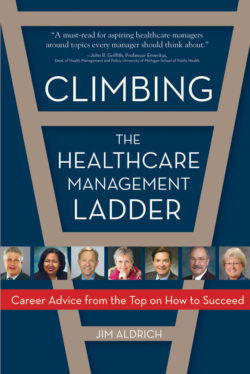
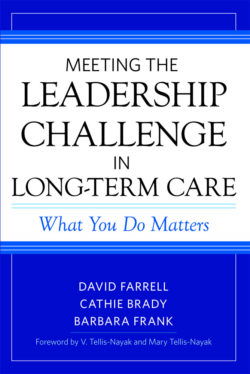

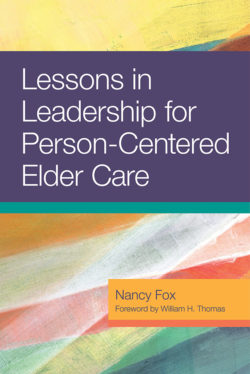

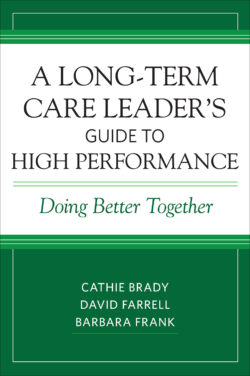
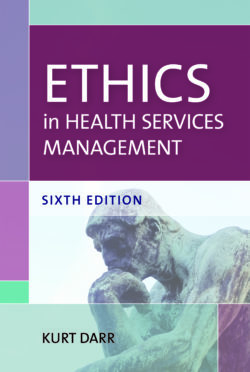
Reviews
There are no reviews yet.